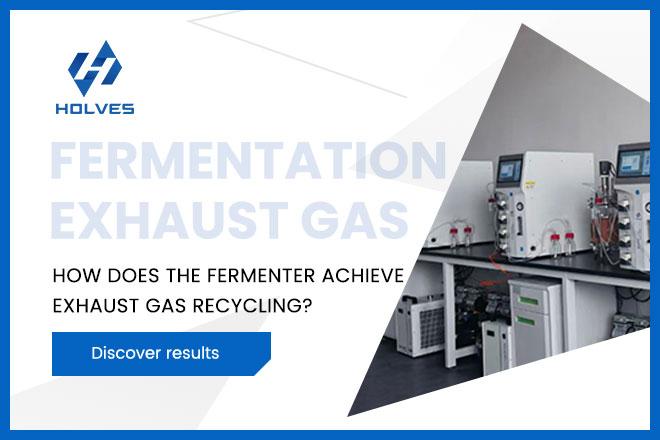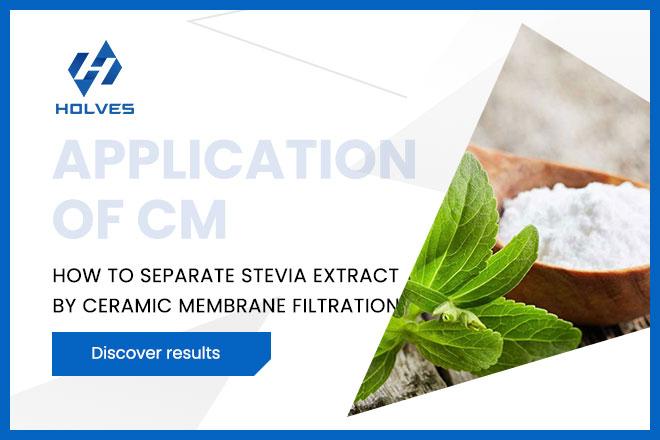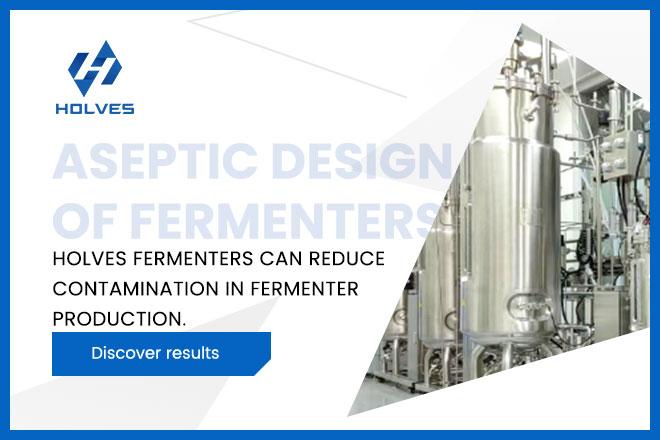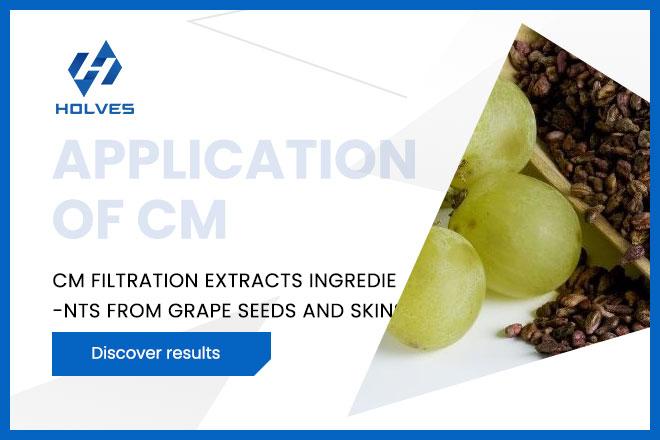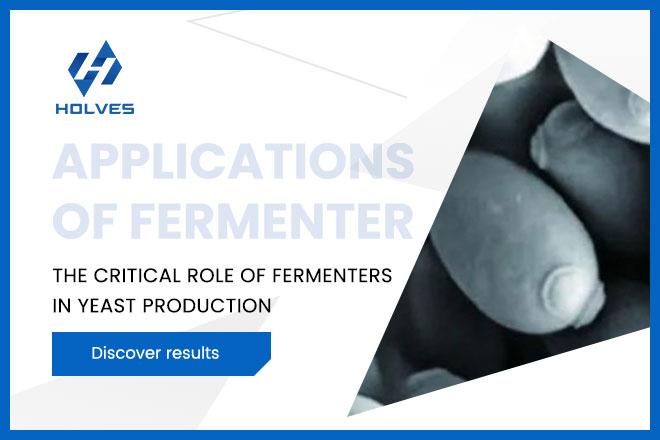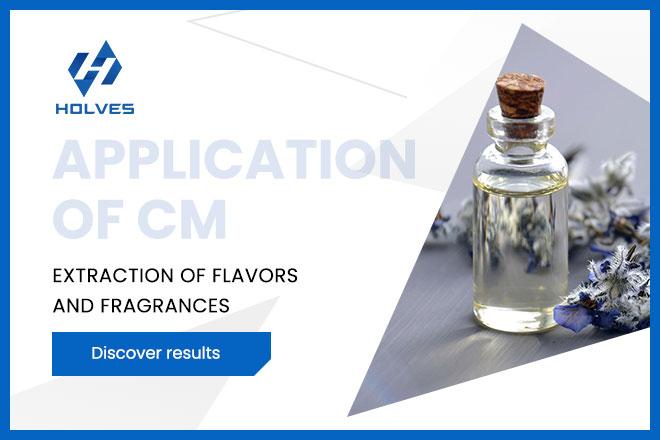In the field of life sciences, the study of exosomes has gradually become a hot spot, and its impact on people in real life is also multi-faceted. From early detection of cancer to immune regulation, the application of exosomes has permeated every aspect of healthcare. For example, it has been found that exosomes can carry specific miRNAs for non-invasive diagnosis of cancer; they can also help treat inflammatory diseases by regulating the immune system.
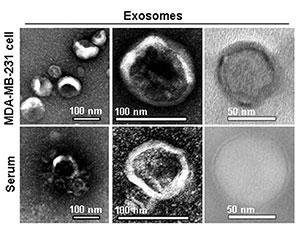
In addition, exosomes have shown amazing potential in the field of skin care, where they can activate fibroblasts, promote collagen synthesis, balance matrix metalloproteinase activity, and maintain the dynamic balance between collagen production and degradation, thus slowing down the signs of skin aging. The antioxidant properties of exosomes can reduce free radical damage to cellular DNA and play a protective role, but also improve cellular energy utilization efficiency and metabolic activity, fundamentally improving cellular health. Clinical data show that exosome treatment increases skin thickness by 19.3%, reduces wrinkles by 23.6%, and increases elasticity by 31.4%, and the effect is especially pronounced after 4-8 weeks of use. However, to truly unleash the potential of exosomes, efficient and pure separation technology is first needed, and this is where Tangential Flow Filtration comes in.
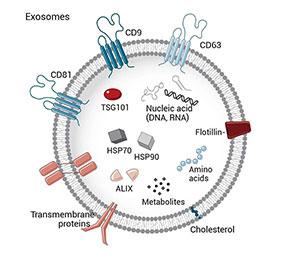 However, the extraction and purification of exosomes has been a bottleneck in research. Although the traditional ultracentrifugation method can obtain a large amount of exosomes, the purity is low and the integrity of exosomes is easily damaged. And the emergence of tangential flow filtration technology provides a breakthrough solution to this challenge.
However, the extraction and purification of exosomes has been a bottleneck in research. Although the traditional ultracentrifugation method can obtain a large amount of exosomes, the purity is low and the integrity of exosomes is easily damaged. And the emergence of tangential flow filtration technology provides a breakthrough solution to this challenge.
Ultracentrifugation(UC)
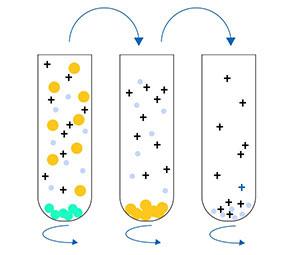 According to the difference in size and density between exosomes and other components in the sample, a series of ultracentrifugation steps with different centrifugal forces and centrifugation times are used to gradually remove non-exosomal components, and finally precipitate and resuspend the exosomes.
According to the difference in size and density between exosomes and other components in the sample, a series of ultracentrifugation steps with different centrifugal forces and centrifugation times are used to gradually remove non-exosomal components, and finally precipitate and resuspend the exosomes.
Advantages: most of the contaminants are removed and the exosomes obtained from the separation are purer; suitable for large volume samples (e.g. cell culture supernatant, serum, etc.); no additional reagents are required, avoiding contamination by chemical reagents.
Disadvantages: requires ultracentrifuge, expensive equipment, complex operation; high centrifugal force may lead to structural damage of exosomes, affecting their integrity; lower recovery rate, some exosomes may not be able to precipitate effectively
SEC size exclusion
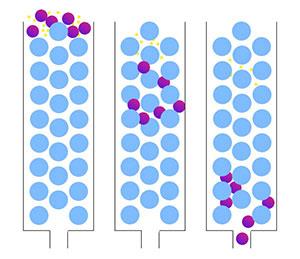 Size exclusion utilizes a porous spherical packing to form a column through which molecules of different sizes flow out at different rates as the sample flows through the column. Exosomes (30-150 nm) are intermediate between large proteins and extracellular vesicles and can be collected in a specific elution volume.
Size exclusion utilizes a porous spherical packing to form a column through which molecules of different sizes flow out at different rates as the sample flows through the column. Exosomes (30-150 nm) are intermediate between large proteins and extracellular vesicles and can be collected in a specific elution volume.
Advantages: short time-consuming and easy to perform, no special equipment required; good reproducibility and high recovery; gentle handling, maximizes the preservation of the intact morphology and structure of the extracellular vesicles.
Disadvantages: Sample dilution, limited purity, not suitable for very large samples.
Magnetic activated
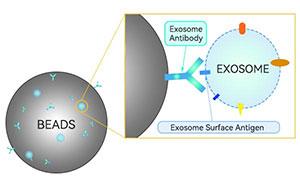 Magnetic activated utilizes antibody-modified magnetic beads to specifically capture exosomes and separate them by magnetic force.
Magnetic activated utilizes antibody-modified magnetic beads to specifically capture exosomes and separate them by magnetic force.
Advantages: it is the highest purity method to isolate exosomes, high specificity; free nucleic acid interference can be excluded
Disadvantages: more expensive, the product is affected by antigen expression
Ultrafiltration(UF)
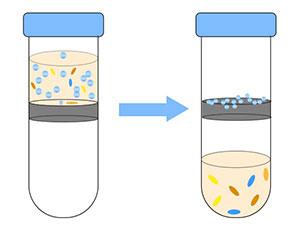 The ultrafiltration centrifugation method utilizes ultrafiltration membranes with different cut-off relative molecular masses (MWCO) for selective separation. Small molecules are filtered to the other side of the membrane, while high relative molecular mass substances larger than the membrane's pore size are retained on the ultrafiltration membrane.
The ultrafiltration centrifugation method utilizes ultrafiltration membranes with different cut-off relative molecular masses (MWCO) for selective separation. Small molecules are filtered to the other side of the membrane, while high relative molecular mass substances larger than the membrane's pore size are retained on the ultrafiltration membrane.
Advantages: This method is relatively simple and efficient, and can concentrate the sample 10-30 times in a short period of time without affecting the biological activity of the exosomes.
Disadvantages: Exosomes may clog the filter pores, resulting in shorter membrane life and lower separation efficiency; adhesion between exosomes retained on the membrane may also occur, resulting in low purity.
Exosomes are nano-sized flexible particles whose fragile lipid envelope makes them highly susceptible to damage during the separation process. The traditional ultracentrifugation method generates large shear forces during prolonged high-speed rotation, which may damage the structure of exosomes and lead to the leakage of their internal biomolecules, thus affecting the biological activity of exosomes and subsequent studies.
Tangential flow filtration technology, on the other hand, makes the exosome flow through the separation interface through gentle tangential action, and the exosome is not directly extruded by the fluid, which greatly reduces the damage to the exosome and other flexible structures, and can effectively protect the integrity of the exosome and its biological activity, ensure that the exosome can still maintain its original function and properties after separation, and provide reliable samples for subsequent research and application.
Efficient Separation and Concentration
TFF technology is particularly efficient when dealing with large sample volumes. It can complete the separation and concentration of exosomes in a shorter period of time, which greatly improves work efficiency. By increasing the contact area between the filtrate and the nanoporous membrane, the tangential flow filtration technology allows exosomes to pass more quickly through the filter membrane with the appropriate pore size, realizing the separation from other impurities. At the same time, the technology can also avoid membrane clogging, making the entire separation process smoother
and more efficient.
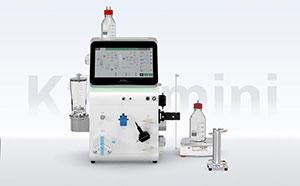 In contrast, the traditional ultracentrifugation method requires multiple centrifugation steps, which is cumbersome and time-consuming, and may result in the loss of exosomes during the centrifugation process. The efficiency of tangential flow filtration technology has great advantages for research projects that require large amounts of exosome samples, such as exosome drug discovery and development, as well as for large-scale exosome production in clinical applications.
In contrast, the traditional ultracentrifugation method requires multiple centrifugation steps, which is cumbersome and time-consuming, and may result in the loss of exosomes during the centrifugation process. The efficiency of tangential flow filtration technology has great advantages for research projects that require large amounts of exosome samples, such as exosome drug discovery and development, as well as for large-scale exosome production in clinical applications.
Wide sample applicability
TFF technology is applicable to samples from a variety of sources, whether they are complex body fluid samples such as blood and urine, or relatively simple samples such as cell cultures, all of them can realize the effective separation of exosomes. The composition and nature of different types of samples vary greatly, and it is difficult for a traditional single separation method to meet the needs of all samples. The tangential flow filtration technology, with its flexible parameter adjustment capability and unique working mode, can adapt to various complex sample environments and stably realize the separation of exosomes, which provides strong support for the in-depth research and application of exosomes in different fields.
Selection of membrane
Is it better to choose hollow fiber membrane columns or cassette packages for exosome purification?
Hollow Fiber Cartridge
Low shear: Tangential Flow Filtration (TFF) design reduces fluid shear and is suitable for protecting exosome integrity.
High throughput: Suitable for large sample volumes (e.g., bioreactor cultures, serums, etc.) and supports continuous cycle concentration.
Repeatability: Large membrane surface area with low risk of clogging, suitable for long-term or multiple use.
Cassette
Rapid processing: open flow channel design for fast flow rate.
Easy to operate: relatively simple installation and cleaning, suitable for routine laboratory use.
Flexibility: Flexible replacement of membranes with different molecular weight cut-offs (MWCO), suitable for exosomes of different particle sizes.
Through the comparison of the above features, the hollow fiber membrane is preferred, with low shear force and wide flow channel, suitable for processing highly concentrated exosome concentrate, and can be scaled up for production.
Common steps
Step 1 Clarification, using 0.2um or 0.45um pore size membrane packages or hollow fiber columns, through the TFF operation, larger than the membrane pore size of the cellular debris or particles are preserved in the retention solution, exosomes in the permeate;
Step 2 Concentration and fluid exchange, using 100 kDa~500kDa MWCO hollow fiber (different molecular weight sizes can be selected according to specific experimental requirements) to further concentrate and exchange the fluid to remove small molecules such as proteins; our automatic ultrafiltration equipment can minimize the structural damage of the exocytosis by detecting and maintaining a specific trans-membrane pressure to maintain the integrity of exocytosis function.
Optimization of key parameters
1. TMP:Excessive pressure leads to membrane contamination and exosome rupture, <15 psi recommended (to be optimized for membrane type pre-experiment).
2. Shear control: Reduce pump flow rate or select low shear membranes (e.g., hollow fiber membrane columns).
3. Temperature: Operate at 4°C throughout to minimize exosome degradation (especially for experiments with high activity requirements).
TFF technology has become an indispensable tool in exosome research and application by virtue of its advantages in protecting the integrity of exosomes, efficient separation and concentration, and wide sample applicability. With the continuous development and improvement of the technology, tangential flow filtration technology will provide stronger support for the application of exosomes in the fields of disease diagnosis, treatment and drug delivery, and promote the further development of the field of life sciences, bringing more benefits to human health.

About Exosomes
Exosomes, a type of extracellular vesicle with a diameter of 30-150 nanometers, are secreted by almost all types of cells and are rich in cholesterol, sphingolipids, and a wide range of biomolecules including proteins, mRNAs, and miRNAs.These molecules are not only biologically active, but also regulate the function of target cells once they enter them. For example, it has been found that exosomes secreted by MSCs can play a role in the inflammatory response by carrying miRNAs and enhancing the activity of neutrophils.
Common Exosome Extraction Methods and Characteristics
Current exosome extraction methods include ultracentrifugation, SEC size exclusion, Magnetic activated , ultrafiltration and tangential flow filtration (TFF).Ultracentrifugation(UC)

Advantages: most of the contaminants are removed and the exosomes obtained from the separation are purer; suitable for large volume samples (e.g. cell culture supernatant, serum, etc.); no additional reagents are required, avoiding contamination by chemical reagents.
Disadvantages: requires ultracentrifuge, expensive equipment, complex operation; high centrifugal force may lead to structural damage of exosomes, affecting their integrity; lower recovery rate, some exosomes may not be able to precipitate effectively
SEC size exclusion

Advantages: short time-consuming and easy to perform, no special equipment required; good reproducibility and high recovery; gentle handling, maximizes the preservation of the intact morphology and structure of the extracellular vesicles.
Disadvantages: Sample dilution, limited purity, not suitable for very large samples.
Magnetic activated

Advantages: it is the highest purity method to isolate exosomes, high specificity; free nucleic acid interference can be excluded
Disadvantages: more expensive, the product is affected by antigen expression
Ultrafiltration(UF)

Advantages: This method is relatively simple and efficient, and can concentrate the sample 10-30 times in a short period of time without affecting the biological activity of the exosomes.
Disadvantages: Exosomes may clog the filter pores, resulting in shorter membrane life and lower separation efficiency; adhesion between exosomes retained on the membrane may also occur, resulting in low purity.
Tangential flow filtration technology(TFF): exosome separation
Protecting Exosome IntegrityExosomes are nano-sized flexible particles whose fragile lipid envelope makes them highly susceptible to damage during the separation process. The traditional ultracentrifugation method generates large shear forces during prolonged high-speed rotation, which may damage the structure of exosomes and lead to the leakage of their internal biomolecules, thus affecting the biological activity of exosomes and subsequent studies.
Tangential flow filtration technology, on the other hand, makes the exosome flow through the separation interface through gentle tangential action, and the exosome is not directly extruded by the fluid, which greatly reduces the damage to the exosome and other flexible structures, and can effectively protect the integrity of the exosome and its biological activity, ensure that the exosome can still maintain its original function and properties after separation, and provide reliable samples for subsequent research and application.
Efficient Separation and Concentration
TFF technology is particularly efficient when dealing with large sample volumes. It can complete the separation and concentration of exosomes in a shorter period of time, which greatly improves work efficiency. By increasing the contact area between the filtrate and the nanoporous membrane, the tangential flow filtration technology allows exosomes to pass more quickly through the filter membrane with the appropriate pore size, realizing the separation from other impurities. At the same time, the technology can also avoid membrane clogging, making the entire separation process smoother
and more efficient.

Wide sample applicability
TFF technology is applicable to samples from a variety of sources, whether they are complex body fluid samples such as blood and urine, or relatively simple samples such as cell cultures, all of them can realize the effective separation of exosomes. The composition and nature of different types of samples vary greatly, and it is difficult for a traditional single separation method to meet the needs of all samples. The tangential flow filtration technology, with its flexible parameter adjustment capability and unique working mode, can adapt to various complex sample environments and stably realize the separation of exosomes, which provides strong support for the in-depth research and application of exosomes in different fields.
Selection of membrane
Is it better to choose hollow fiber membrane columns or cassette packages for exosome purification?
Hollow Fiber Cartridge
Low shear: Tangential Flow Filtration (TFF) design reduces fluid shear and is suitable for protecting exosome integrity.
High throughput: Suitable for large sample volumes (e.g., bioreactor cultures, serums, etc.) and supports continuous cycle concentration.
Repeatability: Large membrane surface area with low risk of clogging, suitable for long-term or multiple use.
Cassette
Rapid processing: open flow channel design for fast flow rate.
Easy to operate: relatively simple installation and cleaning, suitable for routine laboratory use.
Flexibility: Flexible replacement of membranes with different molecular weight cut-offs (MWCO), suitable for exosomes of different particle sizes.
Through the comparison of the above features, the hollow fiber membrane is preferred, with low shear force and wide flow channel, suitable for processing highly concentrated exosome concentrate, and can be scaled up for production.
Common steps
Step 1 Clarification, using 0.2um or 0.45um pore size membrane packages or hollow fiber columns, through the TFF operation, larger than the membrane pore size of the cellular debris or particles are preserved in the retention solution, exosomes in the permeate;
Step 2 Concentration and fluid exchange, using 100 kDa~500kDa MWCO hollow fiber (different molecular weight sizes can be selected according to specific experimental requirements) to further concentrate and exchange the fluid to remove small molecules such as proteins; our automatic ultrafiltration equipment can minimize the structural damage of the exocytosis by detecting and maintaining a specific trans-membrane pressure to maintain the integrity of exocytosis function.
Optimization of key parameters
1. TMP:Excessive pressure leads to membrane contamination and exosome rupture, <15 psi recommended (to be optimized for membrane type pre-experiment).
2. Shear control: Reduce pump flow rate or select low shear membranes (e.g., hollow fiber membrane columns).
3. Temperature: Operate at 4°C throughout to minimize exosome degradation (especially for experiments with high activity requirements).
TFF technology has become an indispensable tool in exosome research and application by virtue of its advantages in protecting the integrity of exosomes, efficient separation and concentration, and wide sample applicability. With the continuous development and improvement of the technology, tangential flow filtration technology will provide stronger support for the application of exosomes in the fields of disease diagnosis, treatment and drug delivery, and promote the further development of the field of life sciences, bringing more benefits to human health.
